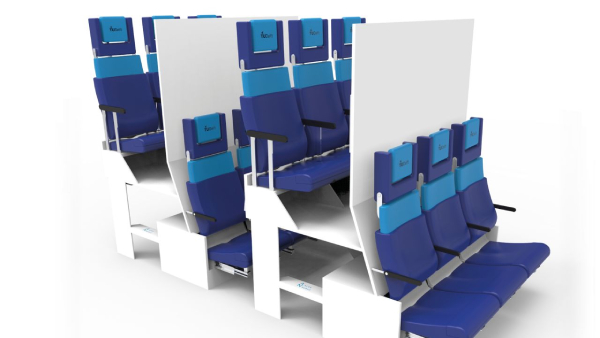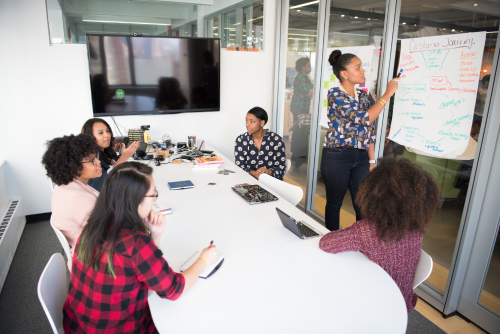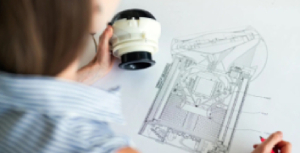
Considering today's modern world, figuring out an idea for a new product is severely limiting and potentially limitless. It is limiting in that the way product development has shaped throughout the years, manufacturers have created almost something for everything, making ideas for new products somewhat tricky.
At the same time, considering how technology and innovation have advanced by bounds and leaps, the potential to generate ideas and brainstorm something not yet made is also highly possible. This dichotomy might make it look like idea generation for a product idea is rocket science, but it could be pretty straightforward.
There is a simple concept used by many who are trying to get a new product idea whenever they are trying to come up with something new, and that is putting themselves in the shoes of the people they are thinking of making the new product for. It all begins with a simple question: is it a solution?
Is It a Solution to a Problem?
New product development is not always about making something people have never seen or heard of. In many cases, it's about finding a solution to a perennial problem that people might already have. Most think that efforts to generate ideas for new products are about finding the next new thing in the market. In reality, it's about trying to find the next big thing in the market, which is why many would describe this exercise as finding a new way to play an old tune.
Considering just how saturated the market already is with products that solve existing problems, coming up with another solution for the same problem is not at all problematic. Still, it is challenging to say what makes it different from everything on the shelves. Take the case of shampoos.
As of 2019, at least 31 known major brands make and distribute shampoo internationally. These significant brands also make specialised shampoos that address hair issues, such as thinning hair, brittle strands, dandruff, oily hair, and other solutions. Unless someone discovers another issue that people have with their hair that a new shampoo could solve, a new brand will almost always have to address these same issues.
For the new product development process to make sense, it would need to find a new way to convey the same message every other product says to the customer. For this exercise, the product strategy must consider how the newly developed product will be marketed. However, this does not always have to be the product team's direction when finding a new idea.
Is Your Solution Solving the Same Problem in a Different Way?
Products today solve the same problem that consumers have in mostly the same way. The brainstorming put into developing a new product should also spend a reasonable amount of time figuring out a way to deliver a new message that would make the product seem fresh, unique, and different from everything in the market.
Advertising agencies are paid staggering amounts of money for this task. Apart from developing the entire marketing campaign for the new product that comes with great ideas on how to tell the new product apart from others, marketing executives work alongside the product manager to figure out an ingenious way to deliver the message that it solves an existing problem that other brands aren't simply able to, and how consumers would be much better off buying this new product.
This is so that the consumers can look past the fact that it is simply a differently-named product that solves an old problem and looks at it with new eyes and say, "Now there's a product I haven't seen before".
This, however, does not mean that no effort should be put into the final product so that it does have something new to it that everything else on the shelves already has. This is evident in how existing brands keep trying to reinvent themselves to garner a more significant market share.
Something Borrowed to Make Something New
Market research has revealed some startling but valuable facts about the consuming public. It is no surprise to see many existing products today that advertise their packaging contains "5 grams more" or that their product contains "extra" ingredients that make it far more effective than other similar products in the market.
This is intended to instil a sense in consumers that they are getting a better deal even if they are still buying the same old product. This idea has been "borrowed" repeatedly by brands and businesses to give their consumers a feeling that they are getting more than their money's worth when they continue to buy this product.
A viable product is typically that which could be made better in some fashion other than finding ways to make it look like a "new and improved" product when, in reality, it has always been the same thing that was sold for years. This idea has worked well for as long as it has been used, which is why instead of bringing a new product to the market, many brands stick to their tried and tested product and simply think up ways where they could get their consumers to continue buying their product instead of trying out new ones.
This practice also applies to businesses offering products and services, such as automobile companies. Unless the new car being offered is straight out of a sci-fi movie, it bears noting that it is the same car being sold by other brands and could mainly only vary in size, power, transmission type, and other things.
The dealership makes everything feel new and exciting by offering various payment options, deals, and freebies so that the potential buyer will be taken in and purchase the vehicle. Instead of engaging in new product development, these businesses think of ways to make a seemingly "new" offer for the public out of something that has always been around.
Is Experimentation the Way to Go to Get New Ideas for Product Development?
However, some industries are deeply entrenched in sophisticated research to bring about an actual new product, mainly in the technology and medical science fields. Technology comes with the benefit that every frontier that could be explored will indeed be explored to make a discovery and come up with something that humanity never thought it needed.
There was a time many decades ago when people were happy with having telephones that had cables and were stuck onto a table or a booth. No one at the time thought how convenient it would be if the telephone could be pocketed and brought everywhere, as they are now. There was also a time when there were separate items to take pictures with, listen to music, do complex calculations, and even send messages to someone far away.
Today, with the massive strides in product development and idea generation, all of these things can now be done with one device, the same one you make calls with.
During the initial conceptualisation phase, however, no one thought it would work out the way it did. This was why the earlier mobile phones were only made to do what people expect phones to do: make calls. A lot of experimentation went into studies to determine if people would like the idea, if the idea was viable, and if the idea could be made commercially because new technologies and developments are never cheap.
The experimentation necessarily encompassed the creativity of the actual device, the manufacture and testing of it, and the eventual market response to it since it would need to be at a price point where many people could afford to buy it and not be limited to the elite who had surplus income.
Idea Generation is Always a Trip to the Unknown
Businesses today are all about weighing risks, opportunities and threats, insights into potential customers, and everything else that could yield data that could be sifted through to isolate a course of action. These things, however, are not things you get when you engage in when you are trying to come up with an idea for something to produce or manufacture.
The field of imagination is the province of the unknown, which is why while businesses will always entertain new ideas that could make more money for them, they will also engage in countless feasibility studies relevant to it, see it answers an unmet need of consumers, or if it the ultimate answer to pain points that consumers always wished those into product development would come up with.
In this sense, imagination and ideas must go hand-in-hand with actionable data and reliable information.















































